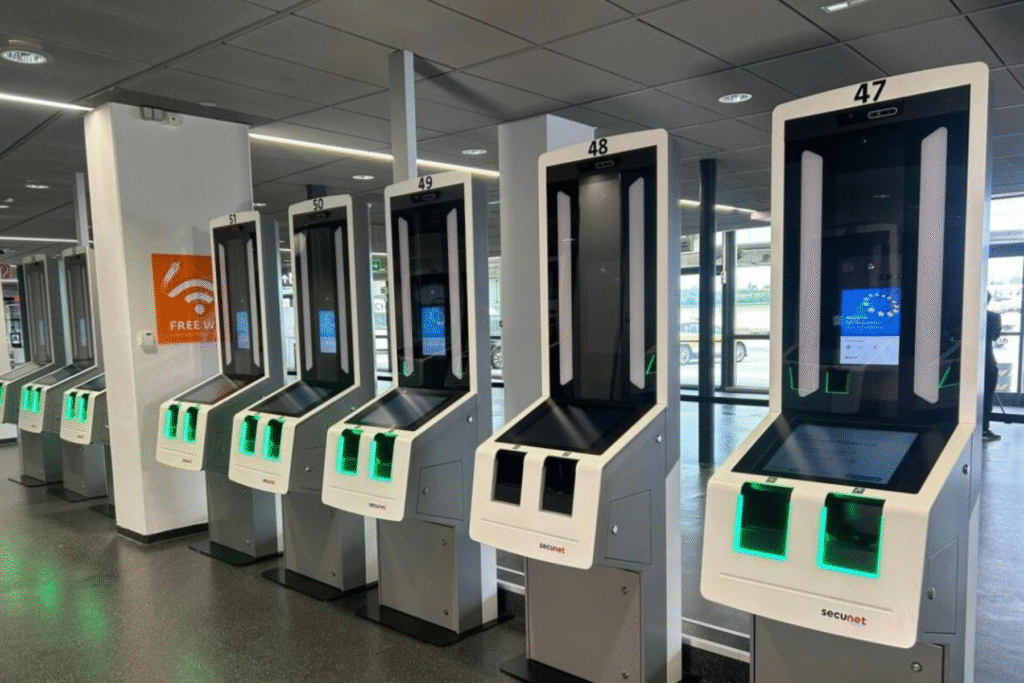
The launch of the new EU Entry/Exit System (EES) is about to begin at Vienna Airport in Schwechat. Starting Sunday, EU member states will gradually introduce the system. The automated IT system records travelers from third countries who intend to stay in the Schengen Area for short periods (up to 90 days) upon their entry and exit at the Schengen external border.
In Austria, the introduction of the EES will apply exclusively to international airports and airfields. According to Interior Minister Gerhard Karner (ÖVP), Vienna will be followed by Salzburg (November 12), Innsbruck (November 19), Graz (November 26), and Linz and Klagenfurt on December 3. EU Commissioner Magnus Brunner described the EES at Thursday’s presentation in Schwechat as an important part of the EU asylum and migration reform. It is also “the most modern IT border management system in the world,” he said.
Karner spoke of “more security” through the EES. The system is networked throughout the EU. The EU’s external borders must be made “robust and secure.” For now, a six-month trial phase is planned.
Vienna Airport Invested €16 Million
According to board director Günther Ofner, Vienna Airport has invested €16 million in 52 self-service registration kiosks and 72 border control booths. He said preparations had taken two years. Around ten percent of passengers—roughly three to 3.5 million in Vienna—come from third countries and will use the EES in the future. The trial run was necessary, Ofner noted, as “teething problems” are possible.
“A new era of European border management is beginning,” said Elisabeth Wenger-Donig, head of division at the Interior Ministry. Manual passport stamping will soon be a thing of the past.
The EES applies at both the first and last Schengen border crossing. Once fully operational, travelers will be legally required to provide biometric data (fingerprints and facial image) during border checks. Franz Ruf, Director General for Public Security, said it represented a “uniform standard across Europe.” Karner emphasized when asked that there were no concerns regarding data protection.
According to the Interior Ministry, the system is expected to be fully implemented at all Schengen external border crossings by April 10, 2026.

